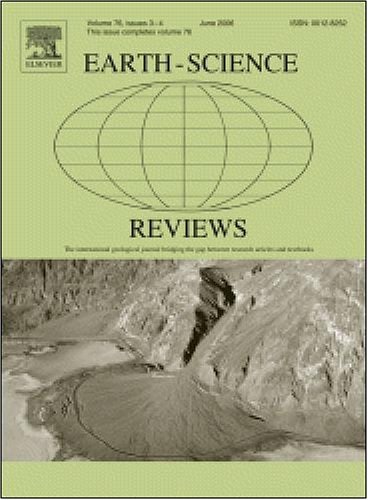Bangong-Nujiang Neo-Tethyan Ocean (Central Tibet): Geodynamics, Crustal Evolution, Metallogeny, and Linkages to the “Yanshan Movement”
IF 10.8
1区 地球科学
Q1 GEOSCIENCES, MULTIDISCIPLINARY
引用次数: 0
Abstract
The Bangong-Nujiang suture zone (BNSZ) is located in the central Tibetan Plateau and represents the remnants of the Permian-Cretaceous Bangong-Nujiang Neo-Tethyan ocean (BNTO). Reconstructing the BNTO's evolution is crucial for understanding the accretionary history of the constituent blocks of the Tibetan Plateau prior to Cenozoic India-Asia collision. This paper reviews Mesozoic magmatism in the southern Qiangtang block (SQB) (north of the BNSZ) and beyond, as well as ophiolites and oceanic plateau material within the BNSZ, to assess the BNTO's evolution from its opening to closure. Combined with the ∼285 Ma southern Qiangtang-Panjal large igneous province, ∼278 Ma embryonic oceanic crust, and stratigraphy and biotas, we suggest that the BNTO opened during the Early Permian. This opening was the result of the rifting of East Cimmerian continental fragments from Gondwana's northern margin. After the Lhasa block separated from Gondwana, the BNTO was located between SQB to the north and the Lhasa block to the south. The widespread arc-related magmatic rocks in SQB indicate that the BNTO was subducted northwards. The initial subduction of the BNTO likely occurred during the Late Triassic, as strongly evidenced by the Mugagangri Group accretionary wedge. An integrated study of stratigraphy and magmatism suggests that the BNTO probably underwent a diachronous closure: the middle segment may have closed in the Early Cretaceous (133–120 Ma) while the western segment may have closed in the Albian (113–105 Ma). The intra-oceanic subduction and oceanic-continental subduction likely occurred during Early Jurassic. Then the widespread subduction-related ophiolites indicate that a late Early Jurassic (∼177 Ma) collisional orogeny occurred between the oceanic plateau and southern Qiangtang, resulting in intra-oceanic subduction. However, the oceanic plateaus in the BNTO have two contrasting fates: they were either accreted to SQB in the middle segment to clog the oceanic-continental subduction zone, or were subducted beneath SQB in the western segment to induce the 177–169 Ma flat-slab subduction. The 169–145 Ma magmatism and 145–125 Ma magmatic gap in western SQB can be explained by the second subduction of the oceanic plateau or/and ridge subduction. The <125 Ma renewed magmatism may be the result of slab rollback and breakoff.
This oceanic plateau subduction may contribute to the formation of the Early Cretaceous porphyry Cu deposits in SQB but this requires more research. Finally, we discuss crustal evolution, including crustal recycling through subduction erosion and andesitic crustal growth via partial melting of the subduction channel mélange rocks during the BNTO's evolution. This reconstruction of the BNTO's history provides valuable insights into the amalgamation of the Tibetan Plateau. More broadly, the Late Mesozoic Bangong-Nujiang orogen is an essential component of multi-plate convergence along the continental margin of East Asia and has played a significant role in generating the well-known ‘Yanshan movement’.
班公-怒江新地层洋(西藏中部):地球动力学、地壳演化、金属成因以及与 "燕山运动 "的联系
本文章由计算机程序翻译,如有差异,请以英文原文为准。
求助全文
约1分钟内获得全文
求助全文
来源期刊

Earth-Science Reviews
地学-地球科学综合
CiteScore
21.70
自引率
5.80%
发文量
294
审稿时长
15.1 weeks
期刊介绍:
Covering a much wider field than the usual specialist journals, Earth Science Reviews publishes review articles dealing with all aspects of Earth Sciences, and is an important vehicle for allowing readers to see their particular interest related to the Earth Sciences as a whole.
 求助内容:
求助内容: 应助结果提醒方式:
应助结果提醒方式:


